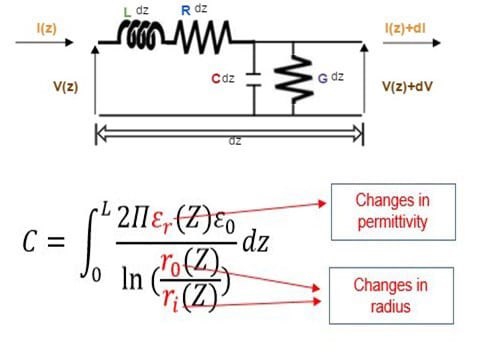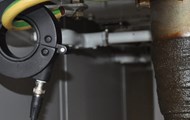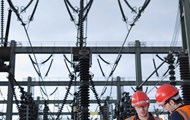Cable Line Resonance Analysis (LIRA)
Line Resonance Analysis (LIRA)
Non-Destructive Testing of cables that do not require cables to be energised to high voltages.
Safer than alternative methods in ‘high risk’ environments.
LIRA can be carried out on electrical cables hundreds of kilometres in length and is becoming increasingly effective for condition monitoring, or fault location, in long length cables (for example submarine cables connecting off-shore platforms to the grid).
LIRA can test for and detect numerous types of faults and defects in insulation including temperature and radiation damage, moisture ingress and mechanical impact to name a few.
LIRA relies on the correlation between insulation’s condition and its dielectric constant (mainly capacitance) and calculates the impedance spectrum (amplitude and phase) as a function of the applied signal over a wide frequency band.
The capacitance of a cable changes as a function of changes in the cables permittivity and changes in the cable’s radius, as shown below:

R = series resistance
L = series inductance
G = parallel conductance
C = parallel capacitance
Changes in the permittivity and radius of the cable change the localised impedance. Impedance irregularities cause reflections, with the largest irregularity being at the end of the cable. By analysing standing wave patterns on short and open circuits, LIRA allows the easy detection of changes in impedance.
Features and Benefits
- LIRA is capable of being used on cables that are hundreds of kilometres in length, unlike other test methods such as VLF that are often restricted to cables of perhaps 10km
- Suitable for cable testing where energising to working voltage is of concern
- Can be used to provide initial cable ‘fingerprinting’, so you can easily recognise when a fault has occurred on a cable. This approach provides the best results
- Accurate detection of changes in impedance
- Localising of faults to within 0.3% of the cable length
- Can locate joints on circuits where they would be otherwise unknown
- LIRA can detect the following phenomena:
- Global insulation degradation
- High Temperature damage
- Moisture ingress
- Radiation damage
- Mechanical effects/defects
*Note: For the highest sensitivity, testing from both ends of a cable is recommended to overcome some signal loss across multiple impedance changes, although this is not a necessity.
To find out more about LIRA, contact us:
+65 6443 3833
Related Services

Online Cable Condition Assessment (CDC)
Online partial discharge (PD) testing enables the collection of PD information from MV/HV cables with the cables still online. Fin...

Offline Partial Discharge Cable Mapping
Offline partial discharge (PD) testing is a fast and accurate method of assessing cable health and locating issues, without excava...